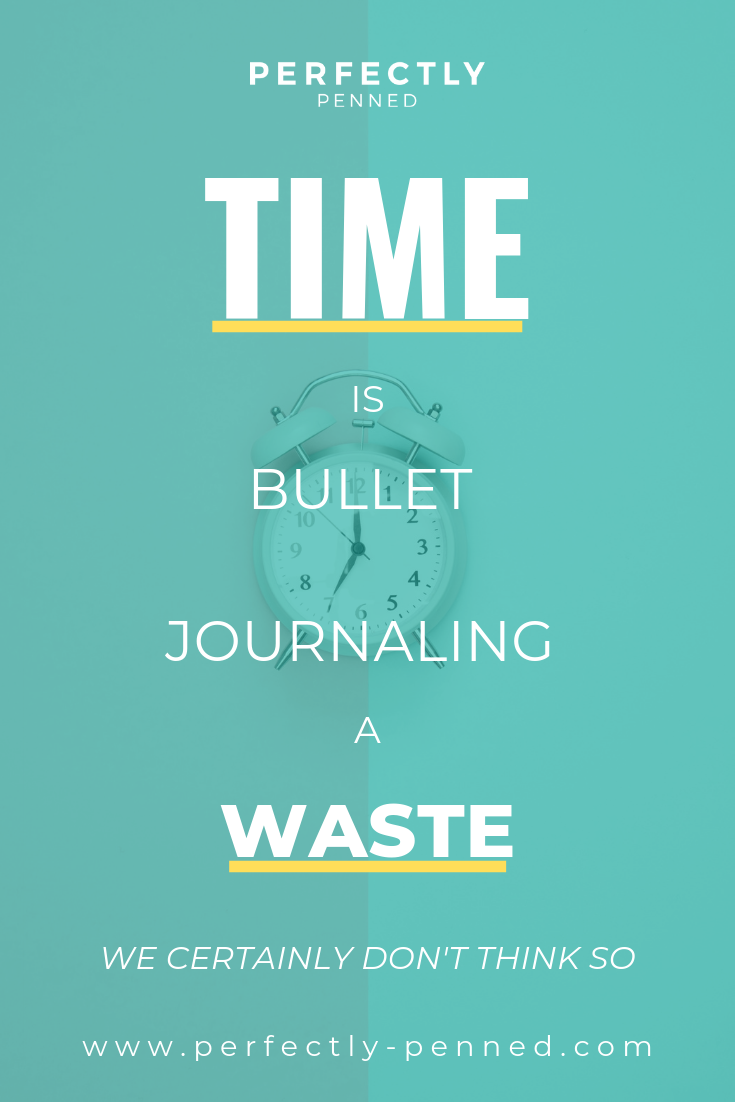Bullet journaling is quickly becoming one of the most sought after ways to plan out your life, and there is no question to why.
Bullet journaling is completely customizable and perfect for anyone who needs something particular in their planning life or for anyone with a creative bone.
However, one of the biggest downsides to bullet journaling is the huge time commitment it takes to do up beautiful artwork on a page sometimes as often as every single day.
Not everyone has time to do a super creative layout, so why should you waste your time bullet journaling if you do not have the time to waste or if you aren’t artistic? Easy!
Bullet journaling does not have to be a huge time commitment and there doesn’t have to be any artwork involved. There are plenty of benefits of bullet journaling and ways to lower the time commitment bullet journaling often requires.
In this article, we will be taking a look at all of the benefits and downsides of using bullet journaling as a planning and time management method.
Benefits Of Bullet Journaling
As I mentioned, bullet journal has pros and cons. Here we will talk about the pros or the benefits of bullet journaling.
Some of these benefits include saving your time (yes, saving your time), helping you to become more organized, helping to increase productivity, and as a creative outlet.
Bullet Journaling Saves Time
I know the focus of this article is the time it takes to bullet journal; however, like most planning methods, it also saves time.
While it does take time to complete a bullet journal as you often see them - unlike that of a store-bought planner - keeping track of your to-dos and using your bullet journal or planner to manage your time ultimately leads to time being used more wisely and productively, effectively saving time.
How exactly does time management in the form of a bullet journal save time?
Managing time and prioritizing tasks leads to more efficient time usage.
It’s the bullet method at its very basic that saves time by enhancing time management. The bullet method of rapid logging using bullet points allows all to-dos to be rapidly logged and easily visible and easily understood using a bullet journal key.
Keep reading to learn more about more specific ways to lower the time it takes to bullet journal.
Bullet Journaling to Boost Productivity
In addition to the bullet journal method, there are plenty of specific layouts meant to improve productivity and save time. Of the most popular are level 10 life, key page, monthly and daily pages or logging, and habit tracking.
The level 10 life is a layout concept developed by Hal Elrod. This layout categorizes life’s priorities into 10 sections and encourages people to maximize their efforts in all categories.
It is essentially a goal tracking and prioritization layout with the specific goal to level up one’s life.
A key page is exactly how it sounds, a page where the key or legend for any colours or symbols used are laid out and their use is defined. The key helps with productivity because it makes using the bullet journal easier and quicker.
For example, in my journal, all items with a bullet next to them are to-dos, all items with a box next to them are due dates, and each category of my life is assigned a colour (purple for school, pink for business, green for work, orange for meetings and appointments, etc.).
Often, items of great importance might have a star next to them.
This allows me to look at my to-dos for the day and see exactly what needs to be done and visualize their priority.
This allows me to complete my to-dos more efficiently.
All logging layouts are essentially to-do and time tracking layouts.
The monthly log is meant to give an overview of the month’s events, due dates, and tasks, thus, providing a view of the future.
Daily logging is where you would find each day’s due dates, events, and to-dos. The daily log, sometimes laid out a week at a time, is where the key really comes into play.
Finally, habit tracking allows you to build and track habits.
These are often simple grids and each box for the habit on a specific day gets marked as done in a variety of ways (i.e. check mark, colouring in, drawings, etc.).
This enhances productivity by helping to build and track productive habits. This is a bullet journaling staple layout which is often found, in some form, in every bullet journal.
Bullet Journaling to Get Organized
Playing off of the idea of bullet journaling as a source of increased productivity is that it helps to get you organized.
The bullet journal helps to organize your time and your life in general. As I mentioned, organizing your time both saves your time and increases productivity.
Bullet Journaling as a Creative Outlet
The final benefit of bullet journaling is that it is a creative outlet.
Many people use bullet journaling both for time management and as a creative outlet.
The bullet journal at its basics is not creative; however, adding some artwork is easy and often what makes bullet journaling so time-consuming.
There are so many benefits of being creative and bullet journalling is a great way to get your creative juices flowing.
Downsides Of Bullet Journaling
Now that we’ve focused on all the good aspects of bullet journaling, let’s be honest about some of those downsides.
The two major downsides to being discussed here are that bullet journaling which can be time consuming and overwhelming.
Journaling Can Be Time Consuming
If you are doing a very minimal form of bullet journaling, then it isn’t likely this is an issue you experience.
However, most people choose a more creative and in-depth form of bullet journaling that can be very time-consuming.
Adding artwork can take a very long time to complete, especially if art is added to every single layout. In addition to artwork, the more layouts used, the more time it takes to journal.
Bullet Journaling Can Be Overwhelming
One issue with bullet journaling that I hear from a lot of beginners is that it is incredibly overwhelming.
There is so much out there about bullet journaling that it is hard to get started.
Hundreds of layouts exist and many beginners don’t realize that bullet journaling at its basics is actually super simple and not nearly as overwhelming.
The basics of bullet journaling are often overshadowed by all the perfect artistic layouts that exist leaving it often super overwhelming and difficult to get excited.
How To Save Time By Bullet Journaling
One of the biggest concerns which we’ve addressed through this article is that bullet journaling can often take a lot of time. Now that we’ve talked about this issue, let’s solve it!
So, how do you save time by bullet journaling?
First, we already talking about how bullet journaling can help you manage your time (therefore saving you time) as a method.
Now let’s talk about more specific ways to lower the time it takes to bullet journal. To keep your bullet journal from taking up too much of your time, try stripping your bullet journal to its core and keeping it minimal.
Strip Your Bullet Journal Down to the Core
Bullet journalling at its basics is super simple and based on rapid logging and the bullet method.
This method is a simple log of to-dos using symbols, mainly bullet points.
Bullet journaling is, at its core, a book of bullet lists. These bullet lists are most often to-dos and events.
If you keep a bullet journal basic using only the bullet journal method then you will not only save time in using your bullet journal, you will likely improve your productivity!
Learn more about how to use the bullet method here.
Keep it Minimal
If you still want to use the bullet journal as a creative outlet in addition to a time management tool, try keeping it more minimal.
There is no reason why you have to quit adding art in your bullet journal to save time.
Art has become so ingrained in bullet journaling and many people find it overwhelming and time-consuming. Save time by using minimal artwork or using artwork less frequently.
Conclusion
Like every other planner out there, there are benefits and downsides to bullet journaling. Bullet journaling can often be time-consuming and overwhelming.
However, bullet journaling can also save time, increase productivity, help you get organized, and be a creative outlet.
The positives and negatives of bullet journaling often depend on how it is done.
In order to save time when bullet journaling, using the basic method and keeping the layouts or art minimal can help lower the time bullet journaling can take, thus, increasing productivity and enhancing time management.
Related Questions
What Is The Point of Bullet Journaling?
Bullet journalling, at its heart, is a simple way of organising your life. By applying a simple organisational structure to your notes, it enables you to track the past present and future and continually improve how you spend your time.


